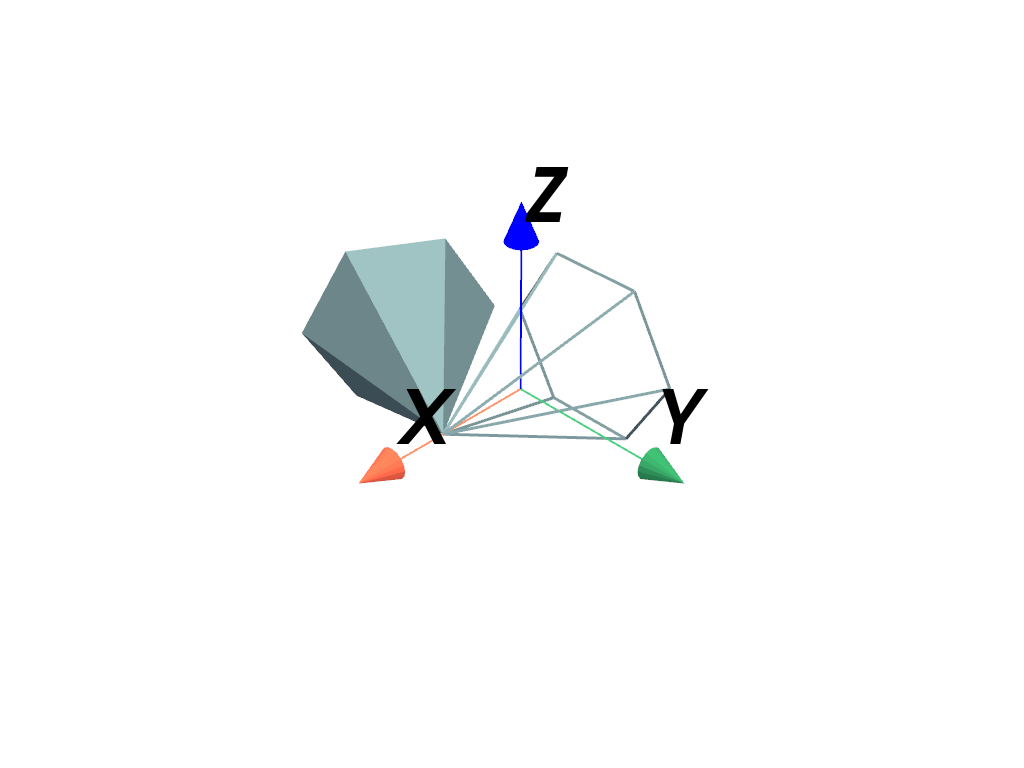pyvista.DataObjectFilters.rotate#
- DataObjectFilters.rotate(
- rotation: RotationLike,
- point: VectorLike[float] | None = None,
- transform_all_input_vectors: bool = False,
- inplace: bool = False,
回転マトリックスまたは
Rotationオブジェクトを使用して、点を中心にメッシュを回転させます。注釈
See also the notes at
transform()which is used by this filter under the hood.- パラメータ:
- rotation
RotationLike 3x3 の回転行列,または SciPy の
Rotationオブジェクト。- point
VectorLike[float],optional 回転の焦点を指定します.デフォルトは原点です.
- transform_all_input_vectorsbool, default:
False Trueの時,全ての入力ベクトルは変換される.それ以外の場合は,ポイント,法線,およびアクティブなベクトルだけが変換されます.- inplacebool, default:
False in-placeメッシュを更新します.
- rotation
- 戻り値:
DataSet|MultiBlockRotated dataset. Return type matches input unless input dataset is a
RectilinearGrid, in which case the output datatype is aStructuredGrid.
参考
pyvista.Transform.rotate回転行列と変換を連結します。
例
回転を定義します。 ここでは、z軸を中心に60度回転する3x3の行列を使用しています。
>>> import pyvista as pv >>> rotation = [ ... [0.5, -0.8660254, 0.0], ... [0.8660254, 0.5, 0.0], ... [0.0, 0.0, 1.0], ... ]
回転を使って、円錐をその先端を中心に回転させます。
>>> mesh = pv.Cone() >>> tip = (0.5, 0.0, 0.0) >>> rot = mesh.rotate(rotation, point=tip)
回転メッシュをプロットします:
>>> pl = pv.Plotter() >>> _ = pl.add_mesh(rot) >>> _ = pl.add_mesh(mesh, style='wireframe', line_width=3) >>> _ = pl.add_axes_at_origin() >>> pl.show()
